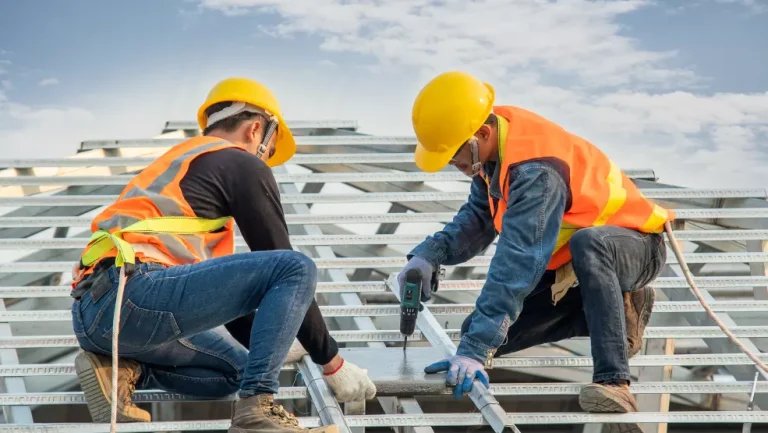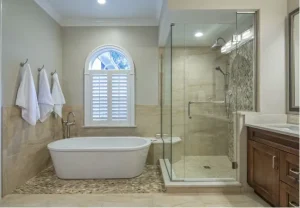In the world of home construction and renovation, gutters might not always grab the spotlight. Often regarded as a secondary feature to the roof itself, gutters play a vital role in protecting the structure of a home by directing rainwater away from the foundation. However, as with many aspects of home design, innovations and new trends in gutter systems are steadily transforming the way we approach roofing. These changes, driven by advancements in technology, sustainability, and aesthetics, are redefining the function and look of gutters while enhancing their performance.
In this article, we explore the most exciting new trends in gutters that are not only improving the efficiency of roofing systems but also contributing to more sustainable, durable, and visually appealing homes.
1. Seamless Gutters: A Clean and Efficient Solution
One of the most notable trends in gutter design is the increasing popularity of seamless gutters. Traditional gutters are installed in sections, leading to seams where leaks can form over time. These seams are particularly vulnerable to the effects of water and weather, and they are often the first places where blockages and corrosion occur.
Seamless gutters, on the other hand, are custom-made to fit the exact dimensions of a home’s roofline, with no seams or joints along the length of the gutter. This design minimizes the potential for leaks and reduces the need for frequent maintenance. Seamless gutters are often made of materials like aluminum, copper, or steel, which are resistant to rust and corrosion, ensuring long-lasting performance.
The aesthetic appeal of seamless gutters is another reason for their growing popularity. With fewer visible joints and seams, they offer a sleeker, more streamlined look that complements modern roofing designs. As homeowners continue to seek out more visually appealing options for their homes, seamless gutters have become a go-to choice for many.
2. Gutter Guards: Enhancing Functionality and Reducing Maintenance
Another major trend that’s transforming the gutter industry is the rise of gutter guards. These protective coverings are designed to fit over gutters and prevent leaves, twigs, and other debris from entering the system, while still allowing water to flow freely. Gutter guards have become an increasingly popular feature, as they significantly reduce the amount of maintenance required to keep gutters clear.
Clogged gutters are a major source of problems, leading to water overflow, roof damage, and even foundation issues. Gutter guards help mitigate these issues by ensuring that gutters remain unobstructed, which is particularly beneficial for homes surrounded by trees or in areas prone to heavy rainfall.
There are various types of gutter guards available, including mesh, screen, and foam options, each offering a different level of protection and ease of installation. The increasing availability and affordability of gutter guards have made them an appealing option for homeowners looking to maintain their gutters with minimal effort.
3. Rainwater Harvesting Systems: Sustainable Gutter Innovations
As sustainability becomes a higher priority for homeowners and builders alike, rainwater harvesting systems are gaining traction. These systems collect rainwater from gutters and channel it into storage tanks, where it can be used for irrigation, landscaping, or even household purposes. This trend is part of a broader movement toward eco-friendly home solutions, and gutters play a central role in these systems.
In the past, gutters were seen solely as a means to direct water away from a home, but with rainwater harvesting, they’ve become an essential part of water conservation efforts. By integrating specialized downspouts and filtration systems, modern gutters are designed to facilitate the collection of rainwater without compromising the structure of the roof or the home’s overall aesthetic.
Rainwater harvesting is particularly valuable in areas with water shortages or where homeowners are looking to reduce their reliance on municipal water systems. It provides an opportunity to reuse water in a sustainable way, contributing to a more eco-friendly home while reducing utility bills.
4. Customizable Gutter Colors and Materials
Gone are the days when gutters were strictly functional and bland in appearance. As homeowners place greater emphasis on curb appeal and personalized design, customizable gutters are becoming a sought-after option. Modern gutter systems come in a wide variety of colors, finishes, and materials, allowing homeowners to select options that complement their home’s exterior design.
From sleek metallic finishes to more natural-looking copper or zinc gutters, there are options to suit every style. Additionally, homeowners can choose gutters that match or contrast with the roofing, siding, or trim, adding a touch of individuality to their property. This customization trend extends to the materials used in gutters as well. While traditional aluminum and vinyl remain popular choices, more premium materials like copper, steel, and stainless steel are being increasingly used for their durability, visual appeal, and longevity.
With these design options, gutters are no longer just a utilitarian feature but a part of a home’s overall aesthetic. Homeowners can now integrate them seamlessly into their roofing systems, creating a cohesive and well-curated look that adds value to their property.
5. Smart Gutter Systems: The Integration of Technology
In an era where smart technology is revolutionizing nearly every aspect of our homes, gutters are not being left behind. Smart gutter systems are becoming an increasingly popular innovation, offering enhanced performance and convenience. These systems are equipped with sensors that detect when gutters are clogged or when water flow is obstructed. In some cases, smart gutters can even send alerts to homeowners’ smartphones, notifying them when maintenance is needed or if there’s an issue with the system.
In addition to clog detection, some smart gutter systems are designed to optimize water flow by automatically adjusting the direction of downspouts based on weather conditions. For example, during heavy rainfall, the system can adjust to increase the flow of water away from the home’s foundation, helping to prevent flooding or water damage.
These systems not only improve the functionality of gutters but also provide homeowners with peace of mind, knowing that their gutters are always functioning at peak performance. As technology continues to advance, it’s likely that even more innovative features will be integrated into gutter systems, further enhancing their efficiency and ease of use.
6. Gutter and Roofing Integration
A growing trend in roofing is the integration of gutter systems with the roofing structure itself. This approach aims to create a seamless transition between the roof and the gutters, improving both the visual appeal and the performance of the entire system. This integration involves careful planning and precise installation, ensuring that the roof and gutter system work together to efficiently manage water flow.
For instance, some roofing systems now feature built-in gutters that are hidden from view, giving the home a sleek and modern appearance. These hidden gutters are designed to blend seamlessly into the roofline, creating a streamlined, minimalist look. Not only do they add to the aesthetic appeal, but they also reduce the likelihood of gutter clogs and leaks, as the integrated design minimizes the need for external attachments.
Conclusion: The Future of Gutters
Gutters may not always be the most glamorous aspect of a home, but as these trends demonstrate, they are becoming increasingly innovative and integral to the overall functionality and design of roofing systems. Whether through the adoption of seamless designs, the addition of gutter guards, or the integration of smart technology, new trends in gutters are transforming the way we think about and maintain our roofs. These innovations not only improve the performance of gutters but also enhance their contribution to sustainability, aesthetic appeal, and long-term durability.
As homeowners continue to prioritize both form and function in their home improvements, gutters are likely to remain a key area of innovation in the roofing industry. The future of gutters is undoubtedly one of efficiency, style, and sustainability, providing homeowners with a practical yet sophisticated solution to water management.















